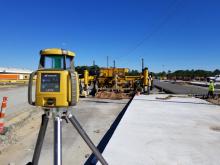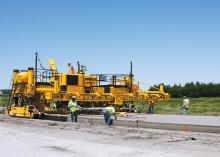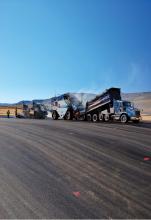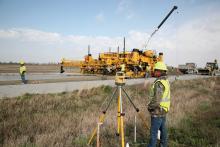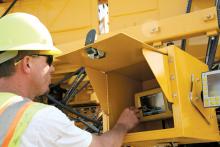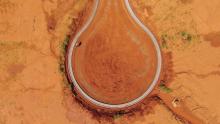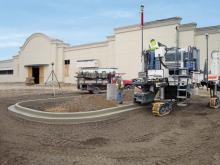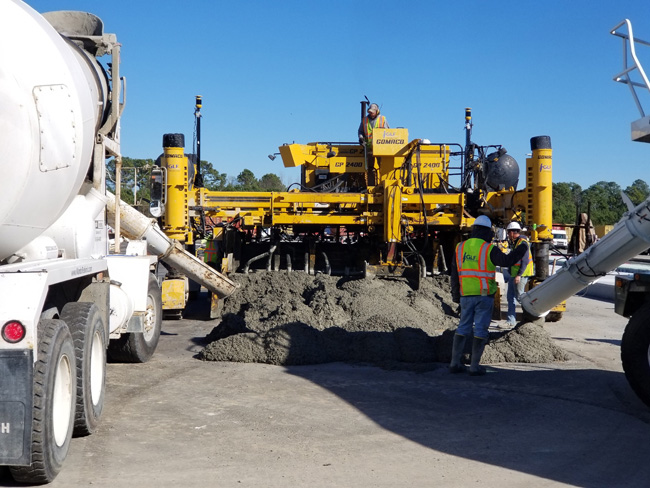
Heavy use of concrete roads and runways over time will reveal any flaws in workmanship, the invasion of water, or the wear from use.
Discolouration, scaling, crazing, cracking, or curling will sometimes occur due to a poor ready-mix batch, inadequate curing procedure, subgrade settlement, or improper bonding of the finish layer. Concrete surfaces are generally very durable, but ageing and surface wear due to use will have an effect.
Concrete paving is complex and achieving quality, long-lasting results requires skill, the right equipment, and advanced technology. One of the major advantages of concrete pavements is that they are typically stronger and more durable than other types of surfaces. They also can be grooved to provide a tough skid-resistant surface, although they are typically more time-consuming to construct.
According to the American Concrete Pavement Association, the role of technology has been significant to the growth and evolution of concrete paving: "Since 1892 - when the very first concrete pavement was placed in America - concrete pavement technology has been changing, continually evolving to meet current and future needs."
The technology has improved considerably since then, with advances in the last 20 years having been particularly of note. Brian Lingobardo, systems manager, 3D road construction,
Slipform pavers offer high efficiency for building concrete roads and runways. However, controlling their performance to ensure desired results is where machine control developers step in. The firm offers a 3D paving capability for slipformers offering millimetre accuracy. The system uses GPS positioning together with a zone laser reference. Mounted on the paver is a control box that governs the hydraulics while a colour screen displays the machine position on the job. Sensors monitor the left and right side of the pan, as well as the elevation and slope.
While the paver is positioned anywhere within the laser zone, the system’s machine control sensor is designed to compute the precise vertical information. Even if the site has an elevation variance of 10m, there is no need to reposition the instrument or receivers. For sites with significant elevations or large areas, up to four transmitters can be linked to cover a larger area and elevation of 40m.
"Since we are free of stringlines, we like the efficiencies provided by the paver system," stated Kevin Gehring, owner/operator at Gehring Construction & Ready Mix Co in Nebraska. "We're not needing to wait and pay for surveyors to be scheduled and pound hubs in ground. And we're no longer waiting and paying employees to set stringline."
Gehring believes he is also achieving better paving alignment and rideability because he is able to use actual radius data for horizontal and vertical curves instead of short tangent string line sections.
Scott Murchison, PE, LEED AP, and chief engineer for RC Construction in Missouri agreed and added, "We like the ease and flexibility that the system provides us, since we're no longer married to a stringline with all the time and effort required to get the slipform paver set up. We recently paved a new runway at Joint Base Andrews in Prince George's County, Maryland, for Air Force One. We achieved an incredible profilograph smoothness rating. We couldn't be happier."
The system also appears to help with paving accuracy, both in material usage and concrete lay down.
"Our yields have been much better than expected," said Jacob Headrick, paving/3D manager, GLF Construction Corp in Florida. "We're dialled into the exact amount of material we need, which saves on material costs and eliminates rework.
Headrick also cites savings and return on his technology investment as benefits: "With our first project, we saved enough to cover the cost of the Topcon system."
Certainly, machine control technology is becoming integral to concrete pavers' desire for a smooth, uniform surface.

